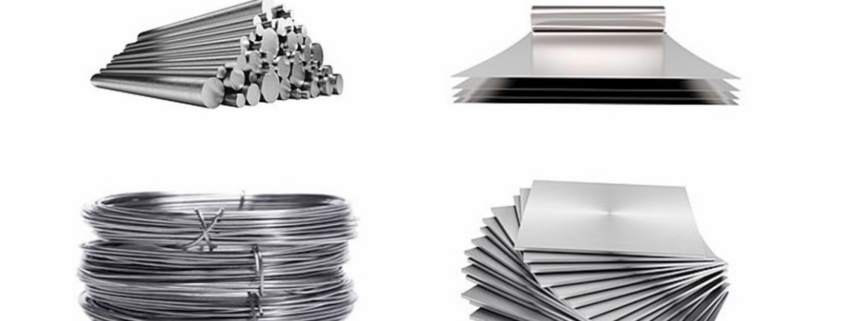Nickel 200 vs Nickel 201
Nickel 200 (W.Nr. 2.4066, UNS N02200)
Nickel 201 (W.Nr. 2.4068, UNS N02201)
Materials exposed to harsh environments, such as seawater, acidic solutions, salt solutions, etc., must have excellent corrosion resistance. The corrosion-resistant alloys supplied by Golden Sunbird Metals play an essential role in production environments where sulfuric and phosphoric acid are used as acidic media.
Nickel 200 and Nickel 201 are two unalloyed pure nickel materials, both with a nickel content of 99.2% or greater, and Nickel 201 has a lower carbon content than Nickel 200.
Material properties
- excellent corrosion resistance to alkaline media
- high ductility over a wide temperature range
- ferromagnetic properties
- good electrical and thermal conductivity
Chemical composition comparison
| Element | UNS N02200 (%) | UNS N02201 (%) |
|---|---|---|
| Nickel (Ni) | ≥ 99.0 | ≥ 99.0 |
| Carbon (C) | ≤ 0.15 | ≤ 0.02 |
| Manganese (Mn) | ≤ 0.35 | ≤ 0.35 |
| Silicon (Si) | ≤ 0.35 | ≤ 0.35 |
| Copper (Cu) | ≤ 0.25 | ≤ 0.25 |
| Sulfur (S) | ≤ 0.01 | ≤ 0.01 |
| Iron (Fe) | ≤ 0.40 | ≤ 0.40 |
The key difference between the two alloys is the maximum carbon content, with UNS N02200 having a higher allowable carbon content than UNS N02201.
Areas of application
Nickel 200 and Nickel 201 are pure nickel materials with good mechanical properties and corrosion resistance. At temperatures above 300°C (572°F), Nickel 201 is superior to Nickel 200 due to its lower carbon content, reduced strength and work-hardening, and increased ductility. both materials have a wide range of applications in the automotive and chemical industries:
- acid-resistant, commonly used in the food industry, for example, in the treatment of cooling brines, fatty acids, and fruit juices
- alkaline and neutral salt solutions and organic acid-resistant environments
- Fluoride-resistant, commonly used in the manufacture of fluorine-related containers, such as containers for the production of fluorine and containers for the reaction between fluorine and hydrocarbons (CFCs).
- storage and transport of phenol
- caustic soda production and handling
- production of synthetic fibers and manufacture of soaps
- production of hydrogen chloride and chlorination of hydrocarbons (e.g., benzene, methane, ethane, etc.)
- vinyl chloride monomer (VCM) production due to its good resistance to dry chlorine gas and hydrogen chloride at high temperatures
- electrical and electronic components
- electrode contacts and current conductors in batteries
- current conductor in alkaline fuels
Excellent Corrosion Resistance
Nickel 200 and Nickel 201 have excellent corrosion resistance to a wide range of corrosive media, especially hydrofluoric acids and bases. The corrosion resistance is outstanding under reducing conditions and in oxidizing media once a passivated oxide layer has been formed. In addition, due to their high nickel content, both materials have excellent corrosion resistance in highly concentrated alkaline solutions and salt baths.
Due to Nickel 201’s low carbon content, intergranular corrosion is almost completely avoided, even at high temperatures above 315°C (599°F). However, the chlorate concentration must be kept low in alkaline solutions because it is susceptible to corrosion through chloride formation.
The corrosion resistance of Nickel 200 and Nickel 201 to inorganic acids varies with temperature, solution concentration, and ventilation. For example, corrosion resistance is greater in unvented acid environments; both materials also have good corrosion resistance in acids, alkalis, and neutral salt solutions (except oxidizing salt solutions); and both materials have good resistance to corrosion from dry gases at room temperature Nickel 201 can be used in dry chlorine and hydrogen chloride at temperatures up to 550°C (1022°F). Nickel 201 is pure nickel.
Nickel 201 is pure nickel and should be used in place of Nickel 200 at temperatures above 315 °C (600 °F) due to the limitation of carbon content to no more than 0.02%. This material has been certified for use in pressure vessels with operating temperatures between -10°C and 600°C (14°F and 1112°F).





